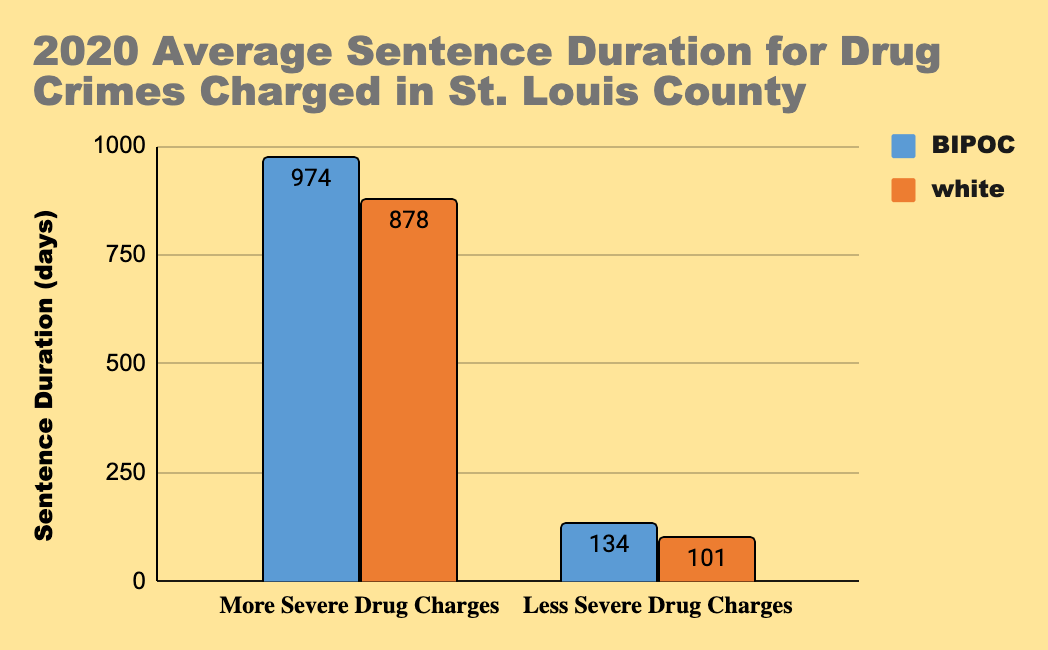
Fig. 1. Sentence duration stratified by crime type and race of defendant for all drug crimes committed in St. Louis County Minnesota in 2020. Data accounts for 173 drug charges including 42 more severe offenses and 131 less severe offenses.
The above analysis of sentence duration stratified by crime type and race of the defendant was performed with a larger dataset released by St. Louis County containing all court cases in 2020. The data set was stratified to only include drug charges and then further stratified by the severity of the charge including a more severe subset for 1st, 2nd & 3rd degree charges and a less severe subset for 4th & 5th degree charges. Finally, the datasets were stratified by race of the defendant, outliers were excluded, and average sentence durations were calculated for each racial group. Racial groups were consolidated into a “BIPOC” group and a “white” group. The “BIPOC” group includes black, native, asian, hispanic, and mixed race defendants. The “white” group includes only white people. People whose race was reported as “unknown” were excluded from the analysis.
For all degrees of charges, BIPOC defendants received on average longer sentences than white defendants. For 1st, 2nd, & 3rd degree charges, BIPOC defendants received an average of 96 more days in detention while for 4th & 5th degree charges, BIPOC defendants received an average of 33 more days in detention.
Minnesota sentencing guidelines do require certain sentences based on the defendant’s criminal history. Yet further analysis of Minnesota Sentencing Guidelines Commission (MSGC) data shows that even after accounting for criminal history scores, sentencing disparities between white people and black people remain. The MSGC data contained all St. Louis County drug felonies that were sentenced in 2018 and 2019. LEAN’s analysis found that after taking into account criminal history score and crime severity -- which together determine state sentencing guidelines -- as well as modifiers that could automatically increase sentences, black people were on average sentenced to 35 more days in prison than white people.
The apparent disparities in this data fit into larger narratives of the War on Drugs and how its legacy of predatory policing and over-sentencing of BIPOC communities remains strong in the Northland. These findings also connect to earlier research, which shows racially disproportionate rates of arrest and use of force by the Duluth Police Department, to the extent that overrepresentation of the BIPOC community in the courtroom is inextricably linked to the practices and biases of the officers enforcing the laws. Further research must be performed in order to examine the relationship that over-sentencing has with policing, the role and biases of individual judges in creating these disparities, and the long-term effects that racially disparate sentencing has on our community.